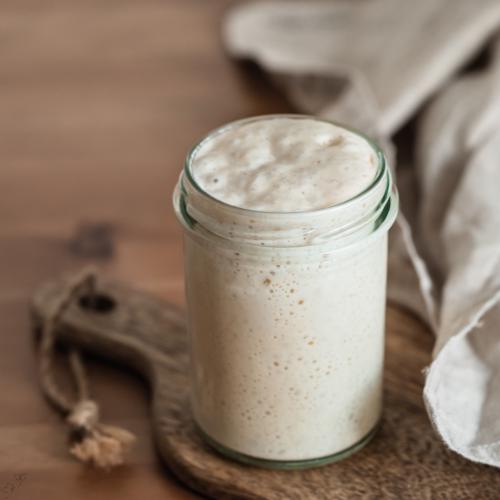🌾 The Benefits of a Stiff Sourdough Starter vs. a 1:1 Ratio Starter
If you’ve been baking sourdough for a while, you’ve probably heard about different hydration levels — how much water your starter has compared to flour. Most bakers use a 1:1 starter (equal parts flour and water by weight), but there’s another method that’s gaining a loyal following: the stiff sourdough starter. Let’s talk about what makes a stiff starter unique and why you might want to give it a try in your home bakery.
🥖 What Is a Stiff Starter?
A stiff sourdough starter is simply a thicker version of your regular starter. It’s usually around 50–60% hydration, meaning for every 100g of flour, you only add 50–60g of water. The texture feels more like dough than batter — firm, not runny. While both types are full of wild yeast and good bacteria, the consistency changes the way your starter ferments and the kind of bread it produces.
💪 Why Bakers Love Stiff Starters
Here are some of the biggest benefits of using a stiff starter in your bread baking routine:
1️⃣ Better Flavor BalanceA stiff starter ferments more slowly, allowing richer, more complex flavors to develop. The result is a mild, slightly sweet loaf rather than an overly tangy one. Perfect for bakers who love depth of flavor without the sour bite.
2️⃣ Low MaintenanceBecause it’s thicker, a stiff starter doesn’t need feeding as often. It also holds its peak longer, so you don’t have to rush to bake right away. That means less waste and more flexibility — great if you bake once or twice a week instead of daily.
3️⃣ Stronger Dough StructureThe lower water content promotes gluten strength, which gives you better oven spring and a more structured loaf. If you bake baguettes, sandwich loaves, or enriched breads, a stiff starter can make all the difference.
4️⃣ Stable in Cool or Dry EnvironmentsA stiff starter is easier to maintain if your kitchen runs on the cooler or drier side. It keeps its moisture longer and is less likely to collapse or over-ferment.
⚖️ When a 1:1 Starter Is Still Best
A 1:1 (100% hydration) starter is lighter, airier, and ferments faster — perfect for rustic, high-hydration loaves or when you want a bit more tang. It’s also easier to stir and track growth visually, which makes it ideal for beginners.
🍞 Which One Should You Use?
It depends on your goals:
- If you want low-maintenance baking with a sweet, balanced flavor, go with a stiff starter.
- If you prefer faster fermentation and tangy, rustic loaves, stick with your 1:1 starter.
Both are excellent — the fun is experimenting to see which one fits your baking rhythm.
✨ Quick Comparison
FeatureStiff Starter1:1 StarterHydration50–60%100%FlavorMild + sweetTangy + boldMaintenanceLowModerateRise/Fall SpeedSlowFastBest ForStructured, enriched loavesRustic, open-crumb loaves
💬 Try This: Convert Your Starter for a Week
If you already have a 1:1 starter, take 1 tablespoon of it and feed it with twice the flour to half the water. Let it ferment at room temperature until doubled, then refrigerate between bakes. You’ll notice the flavor and texture difference almost immediately!
🪶 Final Thoughts
The beauty of sourdough is that there’s no one “right” way — just the method that fits your kitchen, climate, and style. Whether you choose a stiff starter or stick with a 1:1 ratio, the key is consistency, patience, and a little curiosity. Your perfect loaf starts with the right rhythm — and maybe, a slightly stiffer starter. 😉
